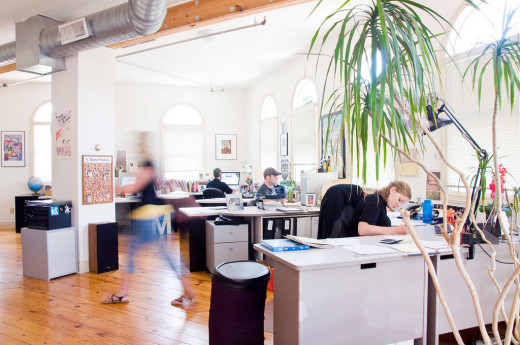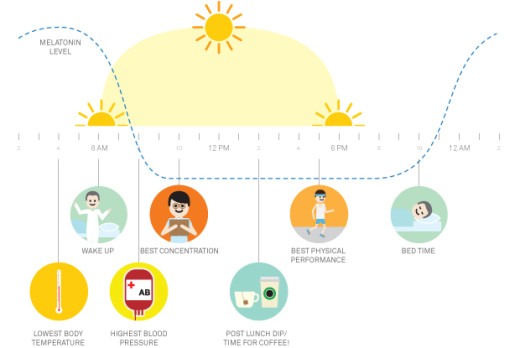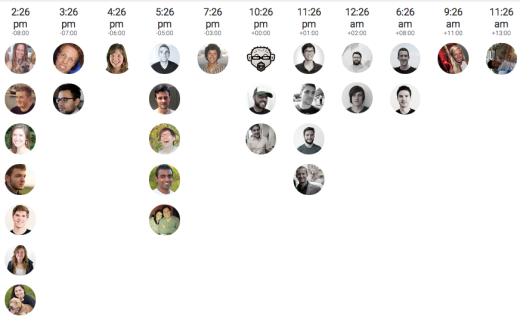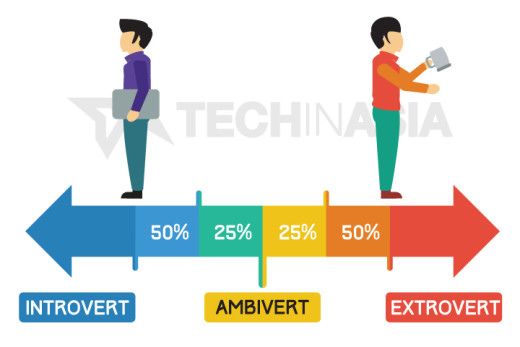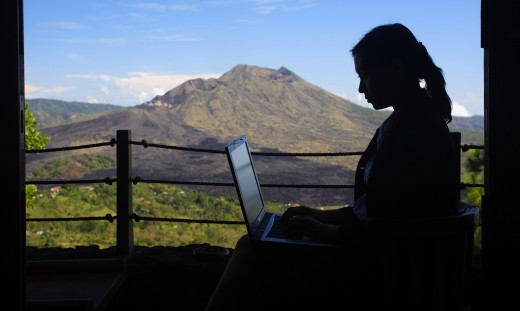
Since I started working remotely I’ve become more productive, learned to complete my work faster, and become better at prioritizing what I work on. I’ve also learned more about how I work, and when I work best.
Remote working doesn’t suit everyone, but for those who do love the extra flexibility and autonomy, here is the where, when, why, and how of finding your perfect remote working setup.
Where you work—quiet offices are better for focused work
Remote employees have the unusual advantage of being to choose where we work from everyday.
Choosing what suits you means you need to know how you work best, and what distracts you most or negatively impacts your work. This can take some experimentation, but here are some things you should consider when working this out:
Noise levels
If you’re doing creative work, research suggests you’ll want to be surrounded by ambient noise. A café or co-working space is the perfect choice in this case.
If you need to focus on a specific task, however, you’re going to want silence as quiet spaces help us focus on straightforward tasks.
So when can you turn up the tunes? When you’re working on something easy. Processing emails, churning out invoices, or planning your schedule are the kind of tasks you can do while listening to your favorite music without being too distracted.
Interruptions
The working space you choose will also change how often you’re interrupted. If you work from home you might have family around to interrupt you, which can be great for forcing you to take breaks but isn’t great for times where you need to have some head down time and get to work.
Writer Austin Kleon found that working from home made it difficult to focus on writing his last book, Show Your Work:
“I wrote Show at the top of the stairs in an open loft, wearing headphones to try to block out the cries of the baby. Let me tell you: Headphones are not a replacement for a shut door.”
A co-working space can have the same issues—if you’re working in the open, surrounded by people chatting, taking phone calls, eating, coming and going… well, you can imagine what that does for someone who needs calm and quiet around them to focus.
On the other hand, co-working spaces can be great for networking and finding a community of like-minded people. Remote workers miss a lot of the incidental social interactions of employees who work in-house. Even seeing other people around us when we’re not interacting with them directly can improve our mood, and shouldn’t be discounted when deciding where to work.
If you need a balance, take into account what type of work you’re doing before you decide where to get set up. If it’s easy work, or something you want to do in small spurts with lots of breaks, maybe a co-working space is a good choice. For long stints of quiet, uninterrupted time, you might want to choose a café or your home office instead.
Logistics
It’s not the most fun thing to think about, but there are plenty of logistical reasons like commute time and cost to influence the choice of where you work. Nobody likes to be packed onto a full train every morning and studies have even shown that moving closer to work and shortening our commute can actually make us happier.
And of course you need to factor in the cost of a shared desk or a rented office, the effort of moving your equipment around, and the cost of buying extra equipment for your home that might be included if you choose to rent an office.
Ergonomics
Where you work can affect your physical health. When you’re looking for your perfect setup there’s plenty to choose from: exercise balls to sit on, treadmill desks, standing desks, ergonomic chairs and keyboards, laptop stands, second screens… you could spend hours (and a fortune) putting together a setup that works for you.
iOS developer David Smith described a tip I’d noticed myself on his podcast, Developing Perspective. According to David, when he started university a professor told him that the most important part of ergonomics is hydration.
It sounds strange, I know. But the idea is that if you drink plenty of fluids throughout the day you’ll be forced to go to the bathroom often. Which is a great thing for your body! You’re taking regular breaks from looking at screens or other things close to your eyes, you’re moving your body which has probably been fairly still while you’re working, and each time you sit down again you (hopefully) reset your posture.
I find keeping a drink bottle on my desk makes it easy to mindlessly sip fluids throughout the day which means I take plenty of breaks without having to remember to do so.
When you work—early mornings aren’t for everyone
I’m a morning lark by nature. I like to get up early when I can manage it, and I tend to lose steam for anything that requires concentration at around 6pm.
My day usually looks something like this:
That means a standard 9–5 workday suits me pretty well. But it doesn’t suit everyone. Some people like to sleep in late every day and find their stride in the early hours of the morning.
Remote work tends to be more supportive of different body clocks, letting the night owls work and sleep when it suits them best so they’re more healthy and more effective at work.
When you decide what time to work, there are plenty of things to take into account aside from when you’re most productive. You might have family to spend time with or other commitments to keep up with. You might also need to sync up with colleagues around the world so you’ll need to take their timezones into account.
The Buffer team is fully remote and distributed around the world, so each team member needs to make the effort to fit their day in with other people they need to talk to in real-time or work with directly. To handle the distributed nature of their team, Buffer relies a lot on asynchronous communication such as collaborative documents, email, or task boards in Trello.
This post on the Zapier blog is a great example of how varied team members’ work habits can be when they can create their own perfect setups.
The differences among the Zapier team’s habits range from blasting loud music and tapping their feet, to working in silence, to talking through problems with whoever’s around. We all have our little idiosyncracies that have to be tamed when working in an office together, so letting these out in remote situations can sometimes be a blessing.
Personally, I tend to talk out loud a lot when I’m coding, which helps me find issues and think through problems more easily. When I’m working somewhere I can’t do that it takes me a lot longer to process what I’m thinking about, so I’m lucky my closest teammate works upstairs from me with music playing to drown me out (and is very patient).
How you work—some of us need more interaction than others
Understanding how you work can inform your choices of where and when to work. This is perhaps the most tricky element of your setup to understand, and can take a lot of trial and error to get right.
Once you know what you’re looking for it should be easier to spot patterns of what works for you and what doesn’t.
Energy levels
Someone asked me recently what to expect if they accepted a remote role for the first time. One of the things I told her to think about carefully was how introverted or extroverted she is.
The more extroverted you are, the more you draw your energy from being around other people. If you’re more introverted, on the other hand, you draw your energy from being alone.
Working remotely gives you a chance to ensure you get as much energy as you need, but it also puts the onus on you to make sure that happens.
For someone who’s very extroverted, it’s likely that they won’t get as much interaction with teammates as they need to keep their energy levels up all day. This is where working from cafés or co-working spaces can come in handy. You could also set up lunch dates, or take meetings or calls throughout the day.
If you’re choosing when and where you work, you need to ensure you’re getting enough access to other people, or enough time alone, to keep your energy up.
Communication
Communicating in a remote team is a challenge. There are so many cues that we take in and use in our communication when we’re face-to-face without even realising, and these are missing when you’re remote. Especially if you rely heavily on asynchronous communication, which teams distributed around the world often have to.
Filling in the gaps that are missing in text-based communication takes a lot of effort. Putting systems in place to make sure everyone’s up-to-date and on the same page is a good place to start. The Zapier team uses Slack to keep everyone in the loop while Stripe and Buffer both share all internal emails with their whole team.
Using emojis, gifs, and emoticons can help add some of the nuance and personality that’s missing in asynchronous communications. This is important for building rapport with remote teammates and understanding the tone of each other’s messages better.
There’s no substitute for real-time communication. I’ve found from experience that touching base face-to-face with teammates on a regular basis made my job a lot easier. Many times confusion or frustration that could have dragged on for days has been quickly cleared up with a video call to my boss or colleagues.
Motivation
I tend to be extrinsically motivated and prone to stress. That means I need lots of external feedback and motivation, as well as regular planning to avoid being overwhelmed by my task list.
Not everyone works the same way as me. You need to understand what helps you get things done. If you get a buzz from the feeling of accomplishment that comes with finishing a task, you could try using a paper to do list so you get a more tactile reward when you cross off each item. Or you could use a tool like iDoneThis to share each task you get done with your team.
If you struggle to stay calm when your workload builds up like me, you might try planning your day’s tasks the night before, or using the Pomodoro Technique to keep you on track and focused on one task at a time.
Feedback
Just as some people need more external motivation than others, some people need more feedback from their boss. I’m one of those people. I like to know if I’m heading in the right direction at every turn, so the more feedback, the better. This means I often need to ask my boss or editor directly to tell me how I’m doing and where I can improve.
The Buffer team has a daily sync-up process where team members are paired up for a week at a time and have a video call each day to touch base on their progress in work and life. This lets team members connect directly and bounce around ideas as well as support each other in building healthy habits.
At Zapier, every team member has a 1:1 meeting with the CEO, Wade Foster, each month to discuss three things:
- What Wade can do to help the team member improve at their job
- What the team member can do to improve at their job
- What the company can do to improve for everyone
Keeping these meetings regular means each employee knows to expect one each month and they know they’ll have an opportunity to bring up any issues they’re facing or ideas they have for improving the company overall.
Why choose remote working—it’s not for everyone
Some people would rather commute to an office everyday and work with their teammates in the same building rather than be left to their own devices. Remote working isn’t for everyone, but there are advantages to it that you can’t find in a traditional office setup.
Freedom
When you work remotely you tend to have more control over your day and can often make work fit around your life more easily. If you need to duck out to a doctor’s appointment or set up a meeting in the afternoon, it’s much easier to accommodate those events when you’re not leaving an office full of people behind. And since you can choose when you work, it’s much easier to work later or add some extra work on the weekend to make up for time you need to yourself during the week.
I like to go out for brunch with my co-founder Josh sometimes. We go on weekdays because it suits us, but it also means most cafés are quieter than they would be for brunch on a weekend. Working remotely means I can push my work hours around to fit with these plans, even if we decide to go out at the last minute.
Not all remote work is quite that flexible, but there’s usually more flexibility than you’d find in a traditional work setup.
Focus on results
When you work in a traditional office it’s much harder to ignore the fact that you work particular hours and focus instead on the work you do. Remote working means it’s harder for your boss to look over your shoulder all the time, so it’s more natural to focus on the results of your work rather than the amount of time you put in.
Autonomy
Another benefit of not having a boss looking over your shoulder constantly is that this leads to more autonomy. Remote teams tend to be made up of people who show initiative and are good at executing. Founders of remote teams have to trust their team members to get their work done in the best way for them, since they can’t micromanage people all over the world.
And team members have to have the ability to focus on what needs to get done and to make decisions since their boss may be asleep or off the clock when they’re working.
If you haven’t tried remote working yet, hopefully this post gave you some idea of whether it would work for you.
And if you have, I hope you’re ready to get stuck in to making your own perfect remote work setup. Pay close attention to how you work, and use those clues to help you decidewhere and when to work.
Most of all, don’t be afraid to experiment. Trial and error is your best friend when you’re walking into the unknown.
Read Next: How to build a happy and productive remote team
Image credits: Buffer, Eric Murray, Brad, Fuzzy Science, Mamak Talk, Jeff Sheldon, Shutterstock
This post first appeared on the Crew blog.
Get the TNW newsletter
Get the most important tech news in your inbox each week.

